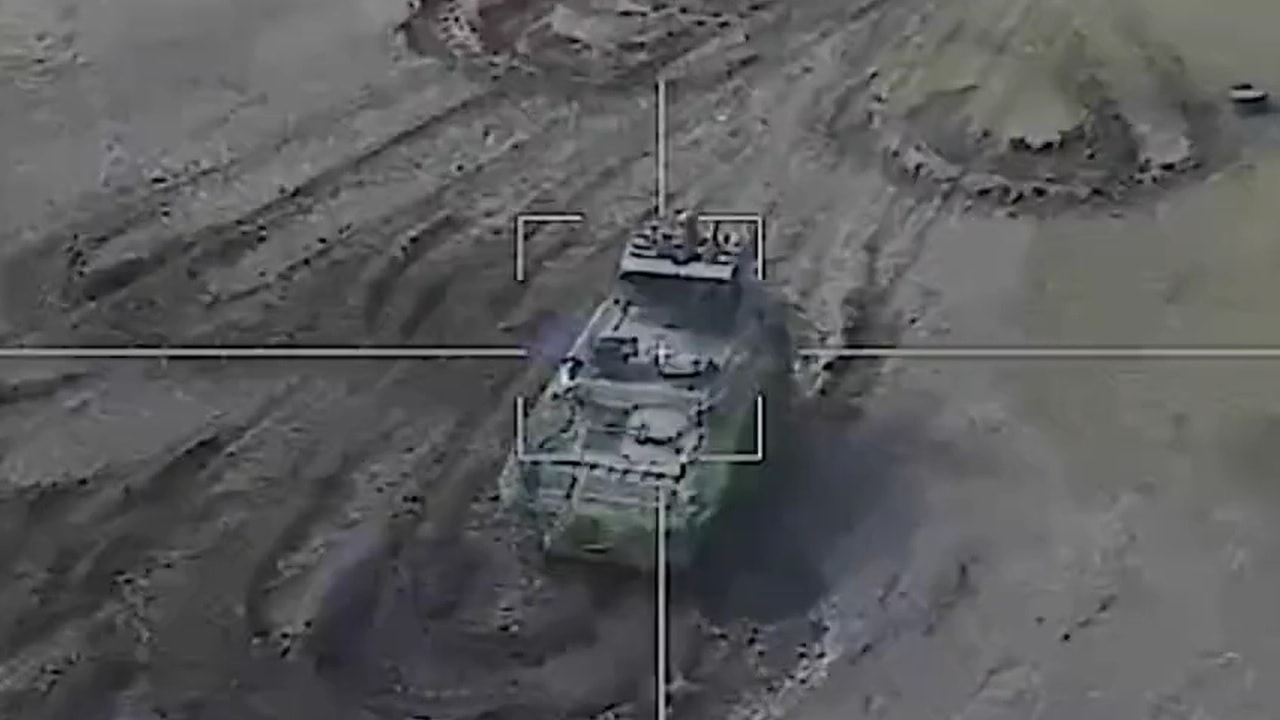The war in Ukraine is all about one thing: a Drone war.
Sure, tanks are getting destroyed all over the battlefield, but drones continue to drive the action and the headlines.
And not all drones are lethal killing machines.
Moscow’s Kamikaze Drone in Ukraine Failed to ‘Kamikaze’
The social media account Ukraine Weapons Tracker (@UAWeapons) shared a photo back in mid-March showing the aftermath of a “failed Lancet strike on a Ukrainian 2S1 Goździk (donated by Poland) near Avdiivka,” in the Donetsk Oblast of Eastern Ukraine.
According to the post, “The loitering munition apparently hit the makeshift metal net cover which led to early detonation.”
ZALA Lancet (official designation: Item 52/Item 51), an unmanned aerial vehicle (UAV), and loitering munition could be seen on top of the 2S1 Goździk self-propelled howitzer.
It is noteworthy that the drone did little damage to the vehicle – and video clips of the strikes of the Lancet on Ukrainian targets have been widely shared on Russian social media, likely suggesting a far greater success rate for the platform.
Drone On
The loitering munition platform was developed by ZALA Aero Group, a subsidiary of the Kalashnikov Concern, and was first combat tested in Syria where it was employed against Tahrir al-Sham (HTS) anti-government forces.
The drones were first deployed to Ukraine last year, and as noted videos posted online showed the Lancet striking a variety of Ukrainian military targets including tanks, Western-support M777 and FH70 howitzers, and other platforms. A Gyurza-M-class gunboat of the Ukrainian Navy was damaged by a Lancet last November – marking the first time the weapon was used against a naval target.
According to Oryx, the Dutch open-source intelligence website, Lancet drones have scored more than 100 successful hits on Ukrainian targets.
“In addition to acting as successful tools of destruction, and inciting fear into the minds of any artillery crew, Russia has also sought to fully utilise the loitering munitions’ propaganda effect by uploading footage of their exploits,” Stijn Mitzer and Joost Oliemans of Oryx suggested.
However, the question to ask, given this recent photo, is whether those hits actually did significant damage to those targets.
The Carnation Survived the Drone Attack in Ukraine
The 2S1 Goździk (Russian for “Carnation”) seen in the social media post appeared largely undamaged. It is one of the 600 plus now in service with the Ukrainian military – and which includes the 33 that were formerly in Polish service, and another 16 that had once been provided to the Czech Republic.
Prior to the start of the war just over a year ago, Ukraine’s numbers of Soviet-era self-propelled howitzers actually exceeded those in Russian service.
Introduced in 1972, the platform is fully amphibious while a variety of track widths are available to allow the vehicle to operate in snow or swamp conditions. It is armed with a 122mm 2A18 howitzer mounted to an all-welded turret located above the fighting compartment.
The man gun is capable of firing HE (high explosive), leaflet cluster munitions, HE/RAP (high explosive/rocket-assisted projectile), armor-piercing HE, flechette, and chemical rounds.
The 2S1 was first employed in combat by the Soviet Army in the Soviet-Afghan War; and later was used by Iraqi forces in the Iran-Iraq War, the Gulf War, and the Iraq War. It saw service with the Russian military in a number of conflicts including the First and Second Chechen Wars, the Russo-Georgian War, and the Syrian Civil War.
#Ukraine: A failed Lancet strike on a Ukrainian 2S1 Goździk (donated by Poland) near Avdiivka, #Donetsk Oblast. The loitering munition apparently hit the makeshift metal net cover which led to early detonation. pic.twitter.com/cUIPRjjCO9
— ???????? Ukraine Weapons Tracker (@UAWeapons) March 15, 2023
Author Experience and Expertise
A Senior Editor for 19FortyFive, Peter Suciu is a Michigan-based writer. He has contributed to more than four dozen magazines, newspapers, and websites with over 3,200 published pieces over a twenty-year career in journalism. He regularly writes about military hardware, firearms history, cybersecurity, politics, and international affairs. Peter is also a Contributing Writer for Forbes and Clearance Jobs. You can follow him on Twitter: @PeterSuciu.
From 19FortyFive
Footage Shows World War I Guns Being Used in Ukraine
‘Vacuum Bombs Destroyed’: Ukraine Footage Shows Putin’s Thermobaric Rockets Destroyed
BOOM! Ukraine Video Shows Precision Strike on Russian Air-Defense System

